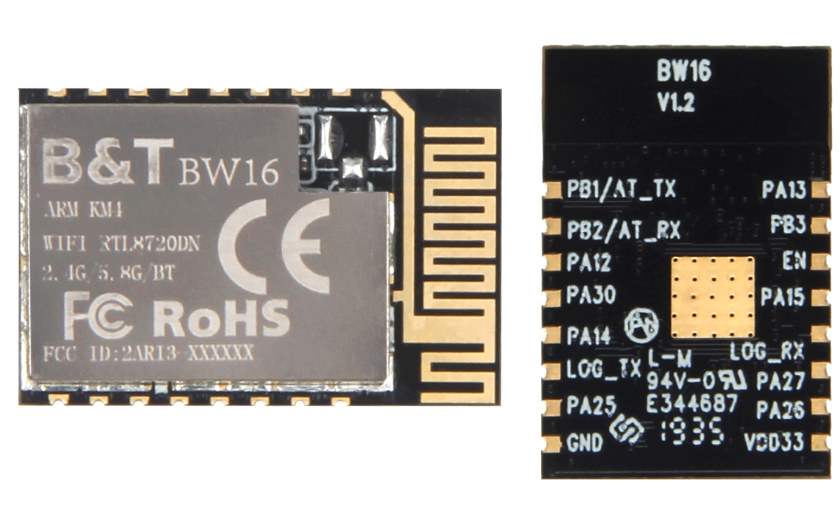There are plenty of 2.4 GHz WiFi modules for IoT project based on processors ranging from Espressif Systems ESP8266 to TI CC3200, or Realtek RTL8710. Some others add Bluetooth 4.2/5.0 such as Espressif Systems ESP32, but it’s much harder to find solutions with dual-band WiFi especially if you have a tight budget for your project or product.
But Realtek RTL8720DN – part of AmebaD family – offers just that with the Arm Cortex-M4/M0 wireless MCU supporting dual-band (2.4/5.0GHz) 802.11 b/g/n WiFi and Bluetooth 5.0 connectivity, and found in modules currently selling for as low as $3.90 or 24 RMB in single units.
B&T BW16 RTL8720DN Module
Specifications:
- Wireless SoC – Realtek RTL8720DN MCU with KM4 Arm Cortex-M4 core @ 200 MHz and KM0 Arm Cortex-M0 core @ 20 MHz
- Connectivity
- WiFi
- 802.11 a/b/g/n WiFi 4
- Frequency Range – 2.412-2.484GHz & 5.180-5.825GHz
- Data Rates
- 802.11a: 6,9,12,18,24,36,48,54Mbps
- 802.11b: 1,2,5.5,11Mbps
- 802.11g: 6,9,12,18,24,36,48,54Mbps
- 802.11n: MCS0–MCS7 @ HT20/HT40 2.4GHz and 5GHz bands
- AP, Station, AP/Client supported
- Bluetooth
- Bluetooth 5.0 LE
- Receiver Sensitivity: -92 dBm
- Transmit Power: 7 dBm
- Antenna – IPEX connector or PCB Antenna
- WiFi
- I/O – 16x castellated holes with GPIO, 2x UART (AT commands + serial), ADC, I2C, SPI, 4x PWM, 3.3V, GND
- Power Supply – 3.3±5% V
- Dimensions – 24 x 16 x 3 mm
- Temperature Range – Operating: -20°C to 85°C; storage: -40°C to 125°C
- Relative Humidity – 10%~90% (non-condensing)
- Certifications – FCC, CE, SRRC, RoHS
The module is sold on Seeed Studio for $3.90, but you’ll also find it for 24 RMB on Taobao ($3.50)
Feasycom FSC-BW236 Module
Another option comes for Feasycom with its FSC-BW236 IoT WiFi module.
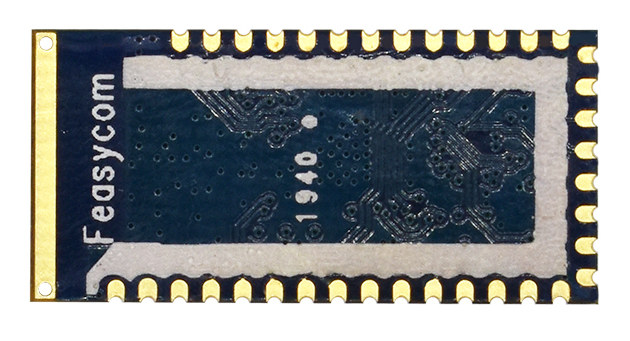
Specifications:
- Wireless SoC – Realtek RTL8720DN MCU with KM4 Arm Cortex-M4 core @ 200 MHz and KM0 Arm Cortex-M0 core @ 20 MHz
- Connectivity
- WiFi
- 802.11 a/b/g/n WiFi 4 up to 180 Mbps
- Tx Power
- 2.4GHz: 17.5dBm (11b), 15.5dBm (11g), 13.5dBm (11n)
- 5GHz: 8dBm (11a)
- TCP, UDP, HTTP, HTTPS, and MQTT protocol
- Bluetooth
- Bluetooth 5.0 LE
- Transmit Power: +8 dBm
- GATT profiles
- PCB Antenna, optional external antenna
- WiFi
- I/O – 36x castellated holes with GPIO, UART, SPI, I2C, USB
- Power Supply – 3.0-3.6V
- Dimensions – 26.9 x 13 mm
- Temperature Range – Operating: -20°C to +85°C; storage: -55°C to +125°C
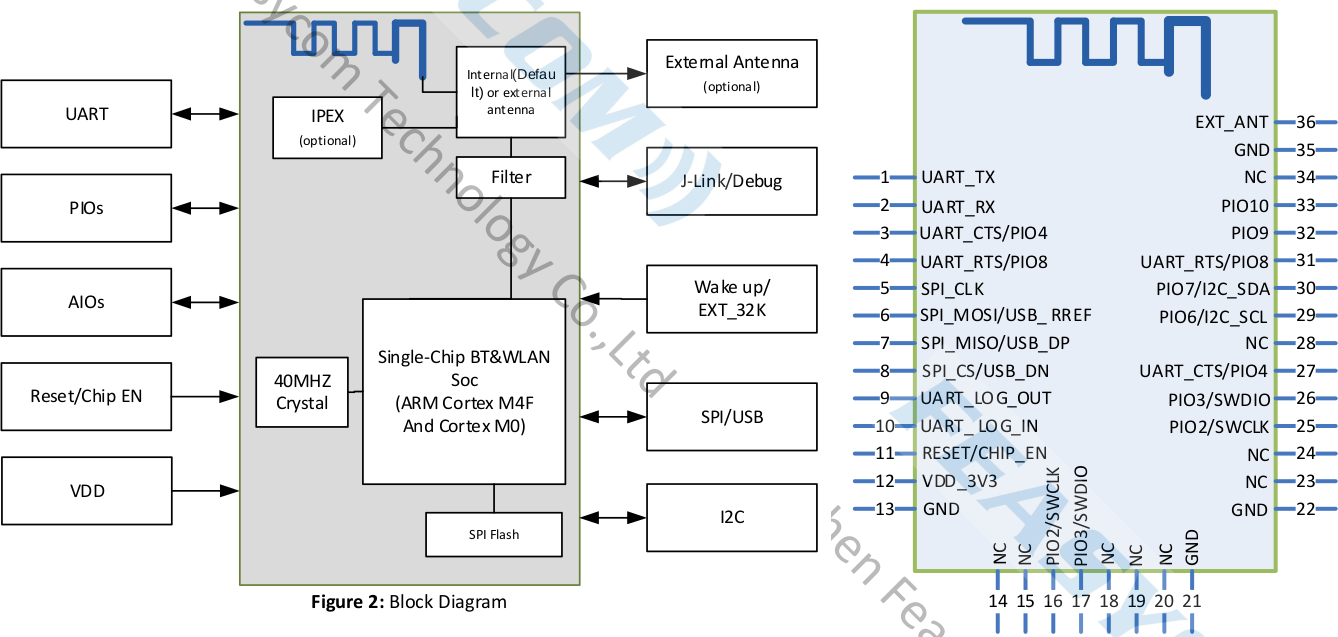
You’ll find more details about the module including a datasheet on the product page. It exposes more I/Os than the B&T module so unsurprisingly it’s a bit more expensive at 40 RMB ($5.8) for a single unit, but the price drops to 30 RMB per piece for orders over 10k.
More details about RTL8720DN WiSoC
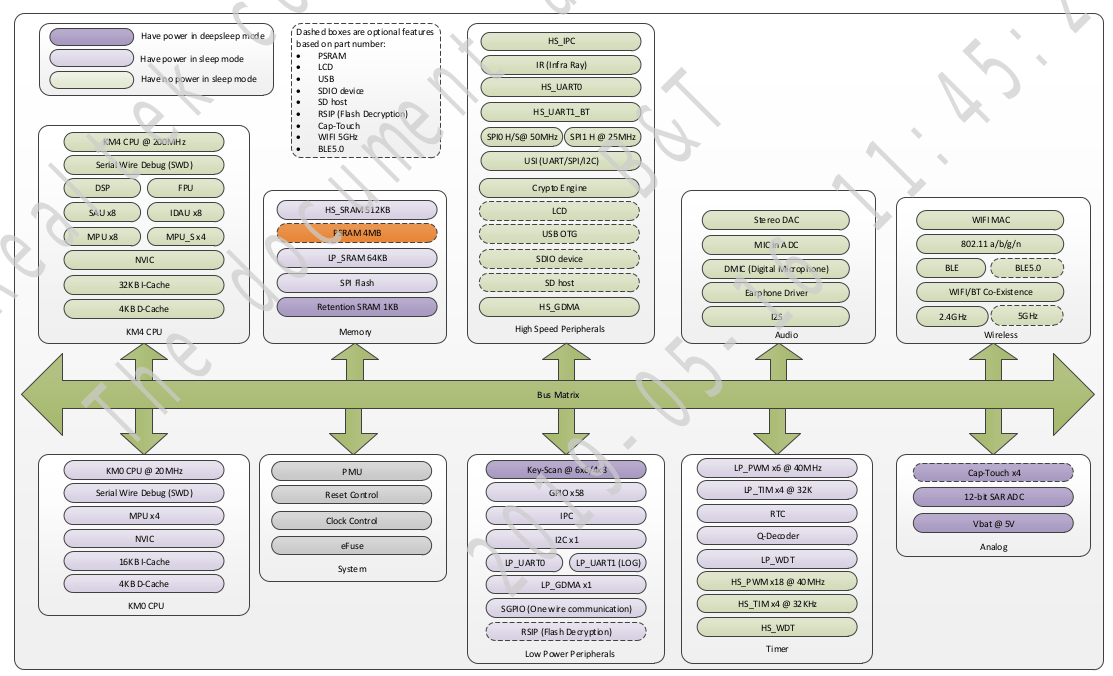
Realtek RTL8720DN is designed for BLE beacons, industrial wireless control, Bluetooth gateways, wearable electronic devices, security ID tags, and smart home products.
Software development is done through Realtek Wi-Fi SDK using the GCC toolchain with the company recommending Windows 7 64-bit (which just got phased out) or Ubuntu 18.04 64-bit for development. The application note shows the SDK is named amebad-sdk, which you’ll find on Realtek Ameba website together with schematics and layout for Ameba RTL8722DM development board. As a side note, the board is sold for $46.90 on Good Display.
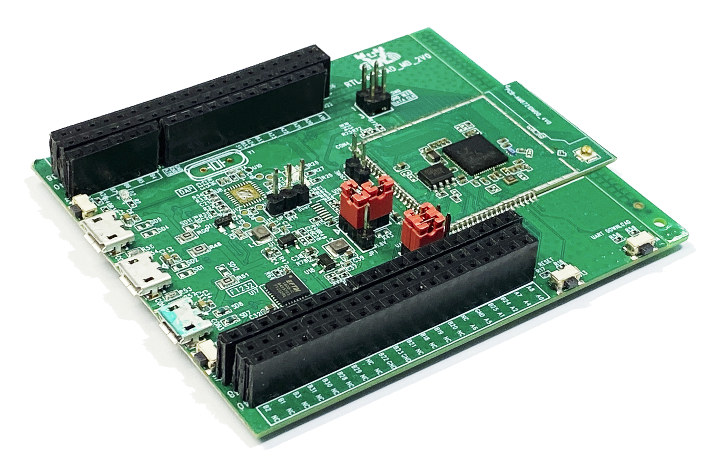
Some Ameba processors are supported by the Arduino IDE, Amazon FreeRTOS, and Arm mbed, but I’m not sure that’s the case for RTL8720DN and other Ameba D processor at this time.
More information about the processor itself can also be found in RTL872xD datasheet.

Jean-Luc started CNX Software in 2010 as a part-time endeavor, before quitting his job as a software engineering manager, and starting to write daily news, and reviews full time later in 2011.
Support CNX Software! Donate via cryptocurrencies, become a Patron on Patreon, or purchase goods on Amazon or Aliexpress


